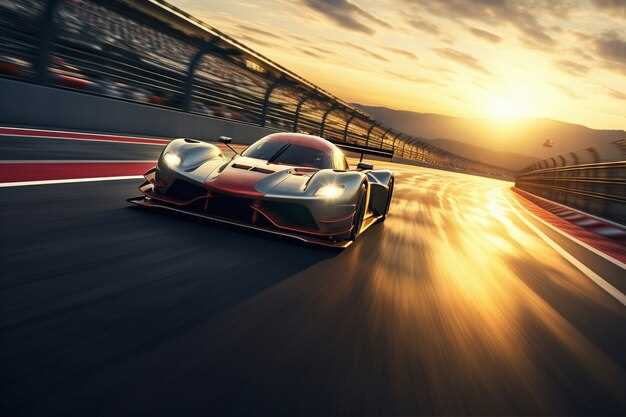
In recent years, Formula E has emerged as a formidable force within the realm of global motorsport, showcasing the prowess of electric vehicles (EVs) in high-octane racing environments. This innovative series has not only attracted a diverse audience but has also significantly influenced the automotive industry’s shift toward sustainable practices. As the world pivots toward greener alternatives, Formula E serves as a beacon of progress, exemplifying how racing can align with environmental responsibility.
Formula E distinguishes itself from traditional motorsport by exclusively featuring electric powered cars, which sets the stage for a unique racing experience. The series utilizes urban circuits, allowing fans to witness thrilling competitions in the heart of major cities around the globe. This integration of racing and city life emphasizes the potential of EVs to contribute to cleaner urban environments while pushing the boundaries of engineering and speed.
As the competition tightens and teams innovate, the growth of Formula E is evident not just in its expanding fan base but also in the increasing number of manufacturers participating. Major automotive brands are investing heavily, recognizing the importance of showcasing their electric models in a racing context. This focus not only elevates the profile of EVs in motorsport but also emphasizes their role in the future of sustainable transportation.
How Formula E Attracts Major Automakers and Sponsors
Formula E has successfully positioned itself as a pivotal force in the evolution of racing, drawing the attention of major automakers and sponsors. The series’ focus on electric vehicles (EVs) aligns with the global shift towards sustainability, making it an appealing platform for manufacturers looking to enhance their commitment to environmentally friendly technologies.
The integration of advanced EV technology in Formula E serves as a testing ground for automakers, allowing them to develop and showcase their electric powertrains in a competitive environment. Brands like Audi, BMW, and Mercedes-Benz leverage their participation to demonstrate innovation and performance, showcasing their electric capabilities to a global audience. This visibility is vital for automakers striving to establish themselves in the burgeoning EV market.
Sponsorship opportunities in Formula E are attractive due to the series’ rapidly increasing fan base and viewership. Brands seeking to align themselves with sustainability and cutting-edge technology find great value in associating with the championship. The unique urban locations of races also provide sponsors with high exposure in metropolitan areas, appealing to environmentally conscious consumers and urban dwellers.
Moreover, Formula E’s commitment to creating a sustainable future extends beyond racing. Initiatives such as Formula E’s sustainability program and community engagement efforts resonate with automakers and sponsors that prioritize corporate social responsibility. By participating, they not only gain marketing opportunities but also contribute to a larger movement towards sustainable practices in motorsport and beyond.
In summary, Formula E attracts major automakers and sponsors by aligning with global sustainability goals, providing a platform for technology development, and offering unique marketing opportunities that reach an eco-conscious audience. This effective combination positions the series at the forefront of the racing landscape, establishing it as a vital component of the motorsport ecosystem.
The Rise of Electric Vehicle Technology in Racing: Innovations and Challenges
The integration of electric vehicle (EV) technology in motorsport has transformed traditional racing paradigms, leading to significant innovations and challenges. Formula E, as the leading championship for all-electric racing cars, exemplifies the shift towards sustainable motorsport solutions.
One of the key innovations in EV racing is the development of high-performance batteries that enhance energy density and efficiency. These advancements allow Formula E cars to deliver exceptional performance comparable to their internal combustion engine counterparts. Manufacturers invest heavily in research and development to create lightweight, fast-charging battery systems that improve race strategies and overall competitiveness.
Electric powertrains also offer unique advantages, including instant torque delivery, which provides rapid acceleration and agility on track. The incorporation of sophisticated regenerative braking systems allows drivers to recover energy during braking, further enhancing the vehicle’s efficiency and performance. This feature not only improves lap times but also contributes to a more thrilling spectator experience.
Despite these innovations, EV racing faces several challenges. Battery technology, while advancing, still needs to overcome limitations such as range anxiety and charging infrastructure. As races can often occur in urban environments, ensuring fast and reliable charging solutions remains a priority for organizers and teams alike. This ecosystem must evolve to support the broader integration of electric vehicles in both motorsport and everyday driving.
Additionally, the transition to electric racing necessitates a shift in mindset among teams, drivers, and fans. Familiarizing stakeholders with the unique characteristics and strategies of EV racing can be intricate, especially given the historical significance of traditional motorsport. Cultivating interest and enthusiasm for these innovations is crucial for the sustained growth of events like Formula E.
Despite these challenges, the rise of electric vehicle technology in racing marks a pivotal moment for motorsport. As Formula E continues to grow, it will serve as a catalyst for broader acceptance and development of sustainable vehicle technologies, pushing the boundaries of innovation in the industry.
Environmental Impact of Formula E: Comparing Traditional Racing and EV Racing
As the popularity of Formula E continues to rise within the global motorsport scene, its environmental benefits increasingly come into focus. This section evaluates the environmental impact of Formula E compared to traditional motorsport racing, primarily focusing on emissions, resource usage, and sustainability practices.
Emissions Comparison

Traditional racing formats, such as Formula 1 or NASCAR, largely rely on internal combustion engines, which significantly contribute to greenhouse gas emissions. In contrast, Formula E operates solely with electric vehicles (EVs), which produce zero tailpipe emissions during races. This fundamental difference leads to the following outcomes:
- Reduction of CO2 emissions in urban areas where races are held.
- Less air pollution, benefiting public health and local environments.
Resource Usage

The resources required for traditional motorsport often involve extensive oil refining and fuel production. Formula E, on the other hand, emphasizes the use of sustainable energy sources:
- Races are powered by renewable energy, contributing to a cleaner race footprint.
- The battery technology used in Formula E highlights advancements in energy storage, critical for sustainable energy solutions.
Sustainability Practices
Formula E’s commitment to sustainability extends beyond the vehicles and races:
- All Formula E events incorporate eco-friendly practices, such as sustainable materials for fan experiences and event infrastructures.
- The series actively promotes the use of electric vehicles in everyday life, enhancing awareness about EV benefits.
In summary, the environmental impact of Formula E stands in stark contrast to traditional motorsport formats. By focusing on reducing emissions, optimizing resource usage, and implementing strong sustainability practices, Formula E positions itself as a progressive force in the automotive and motorsport industries. This commitment not only fosters a greener future but also serves as a model for traditional racing to follow as the world shifts towards sustainability.




